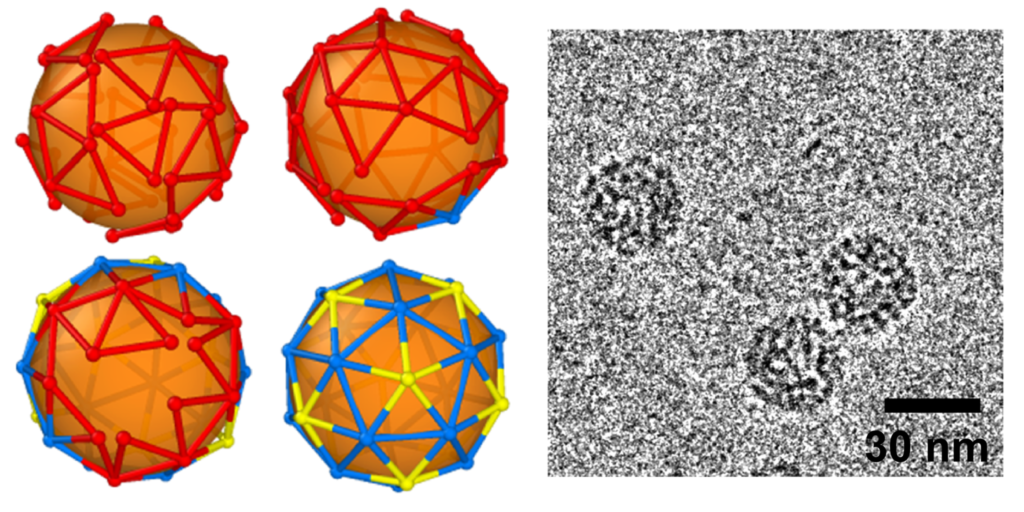
of viruses assembled in vitro (right).
RNA viruses are a family of infectious agents with sometimes dramatic health and economic consequences such as those we are currently experiencing. Over the course of a life cycle, viral components, synthesized by the host cell, spontaneously assemble to form new viral particles ready to infect neighboring healthy cells — a process that is still poorly understood. In a recent paper, theoretical physicists (Univ. of California Riverside) and our team have identified the factors that drive the self-organization of icosahedral viruses.
Some of these RNA viruses display a simple protein shell with an icosahedral symmetry that serves to protect their genome. The assembly process of these shells is hard to study, in particular because it is often essential in vitro to go through non-physiological conditions – an acidic medium for example – to arrive at perfectly symmetrical objects. Theoretical physicists from the University of California Riverside and experimentalists from the SOBIO team have jointly identified factors that drive the self-organization of icosahedral viruses. The assembly pathway exhibits an energy barrier which turned out to be lowered by increasing the concentration of the components. Small-angle X-ray scattering as well as cryotransmission electron microscopy revealed a disorder-order transition within the objects, which became morphologically identical to native viruses at high concentration, and this under physiological conditions. Monte Carlo numerical simulations confirmed this effect and demonstrated that the elastic energy of the protein shell makes it possible to correct the errors of assembly. This work explains, at least in part, how viral particles with an icosahedral order self-organize under different conditions, including physiological ones.
Contact
Reference
How a Virus Circumvents Energy Barriers to Form Symmetric Shells
Sanaz Panahandeh, Siyu Li, Laurent Marichal, Rafael Leite Rubim, Guillaume Tresset, Roya Zandi
ACS Nano 14, 3170-3180 (2020)
doi:10.1021/acsnano.9b08354
